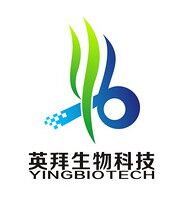| Human Hippo Signaling PCR Array |
|
| The Human Hippo Signaling Pathway RT2 Profiler PCR Array profiles the expression of 84 genes involved in the Hippo signal transduction cascade. The evolutionarily conserved Hippo pathway was discovered by analyzing Drosophila mutations with overgrown tissues, and mammalian homologues of its components have since been identified and characterized at a molecular level. The Hippo cascade regulates organ size and stem cell properties by governing cell proliferation, apoptosis, and contact inhibition. Alterations of this pathway are frequently found associated with cell overgrowth and tumorigenesis. The Hippo pathway can be divided into upstream regulatory components, the Hippo core kinase components, and the downstream transcriptional machinery for modulating target gene expression. Multiple proteins, some of which mediate cell-cell or cell-ECM adhesion, feed into the core of the Hippo pathway. Upstream regulators such as WWC1, SCRIB, Crumbs complex, cadherins, FAT, and Dachsous modulate the Hippo pathway by activating the core kinase cassette. There, autophosphorylated MST1/2 catalyzes the phosphorylation and activation of LATS1/2 that in turn catalyzes the phosphorylation of the transcriptional co-activators YAP1 and TAZ. In their unphosphorylated states, YAP1 and TAZ freely enter the nucleus and function as transcriptional co-activators. However upon phosphorylation, YAP1 and TAZ instead bind the 14-3-3 family of scaffolding proteins, sequestering them in the cytosol. Upstream regulators can also circumvent the core kinase cassette by sequestering the co-activators at cell-cell junctions instead. This array profiles genes involved in upstream regulation, the core kinase complex, and downstream mediation of the Hippo pathway. A set of controls present on each array enables data analysis using the ΔΔCT method of relative quantification and assessment of reverse transcription performance, genomic DNA contamination, and PCR performance. Using real-time PCR, research studies can easily and reliably analyze components of the Hippo signaling pathway with this array.
The RT2 Profiler PCR Arrays are intended for molecular biology applications. This product is not intended for the diagnosis, prevention, or treatment of a disease.
96-well Plate, 384-well (4 × 96) Plate, and 100-well Disc formats are available.
|
|
|
|
|
Upstream Regulators: ACTG1, AMOT, AMOTL1, AMOTL2, CASP3, CRB1, CRB2, CRB3, CSNK1D, CSNK1E, DCHS1, DCHS2, DIAPH2, DLG1, DVL2, FAT1, FAT2, FAT3, FAT4, FJX1, AJUBA, LIMD1, LIX1L, LLGL1, LLGL2, LPP, NF2, RASSF2, RASSF4, SCRIB, WTIP, WWC1, ZDHHC18.
Hippo Core Kinase Complex: LATS2, MOB1B, MOB1A, SAV1, STK3, STK4, TAZ, YAP1, MST1, WWTR1.
Downstream Mediators: HIPK2, MAPK10, MEIS1, PRKCI, PRKCZ, SMAD1, TEAD1, TEAD2, TEAD3, TEAD4, TP63, TSHZ1, TSHZ2, TSHZ3, WNT1.
Target Genes: CASP3, CCNE1, CCNE2, MYC, PPP2CB, PPP2R1A, PPP2R2D, PTPN14, RERE.
Contact Inhibition: NF2, TAZ, YAP1.
Cell Polarity: CRB1, CRB2, CRB3, DCHS1, DCHS2, FAT1, FAT2, FAT3, FAT4, LATS1, LATS2, MST1, SCRIB, STK3, STK4, GPC5, HMCN1, POTEF, TAOK1, TAOK2, TAOK3, TJP1, TJP2, MPDZ, MPP5, NPHP4, PARD3, PARD6G. |









